The Best Food I Ate in Vietnam and Where to Find It
- evesymington
- Sep 19
- 12 min read
Updated: Sep 26
Welcome to WS&T Dispatches! This is where we get our well-traveled buddies to write about their experiences all over this beautiful globe.

My food-obsessed brother went to Vietnam and all I got was this... really good article. Now I'm hungry. Thanks a lot. Take it away, bro...
Ahem. With my 30th birthday fast approaching, my girlfriend Charity suggested we use her much-needed break from being an intense doctor to get away for a while. She proposed an adventure in her mother country of Vietnam, which she had never gotten to see. Having been enthralled with the Viet dishes I’d sampled in the States as well as the many dishes from Charity’s childhood I’d attempted to recreate at home, I needed little convincing... Thus, we set out, determined to see and eat all the things.
The Absolute Best Food in Vietnam
JUMP TO:
What to Eat in Hội An

We began our journey in the ancient port city of Hội An, just an hour's drive south from the airport in Da Nang. Twinkling with centuries of cultural influence from Japanese, Chinese, and European merchants, this trade hub is a wonderful introduction to Vietnam. Buildings embraced by lush greenery, welcoming smiles everywhere you look, and tantalizing smells wafting around every corner give Hội An a profoundly cozy atmosphere. However, this is still Vietnam. The vibes aren't exactly calm.
We first arrived around dinnertime, delaying our meal with a quick stop at the tailors to partake in some of the finest (and most affordable) tailoring in the world. My girlfriend wouldn't let me get a full toreador costume, so I settled for Luffy's (from One Piece) red vest, blue jean cutoffs and yellow straw hat. (jk)
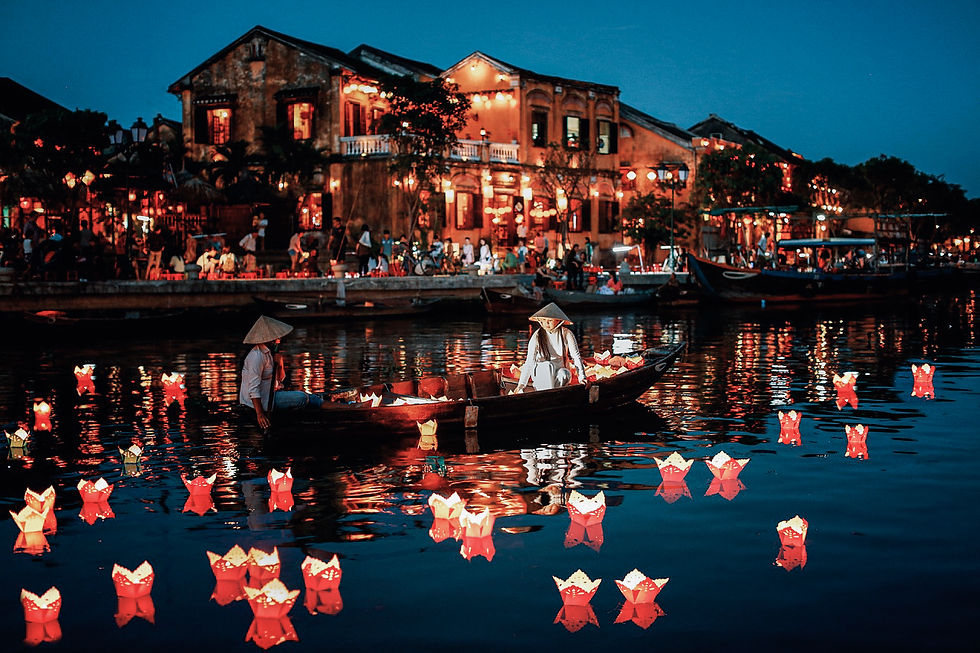
After choosing our clothing and fabrics and being swiftly measured by no fewer than four efficient aunties, we opted to carry our bags and walk the last mile to our AirBnB through the city. A rewarding choice, it turned out, as the Lunar New Year celebration was in full swing and the whole place was buzzing with life.
If you’re lucky enough to visit during the festival, you’ll witness endless strings of flags crisscrossing every street, thousands of colorful lanterns hanging from the scores of vibrant, neon-lit bars and restaurants, puppet shows, music, and dancing, small wooden boats illuminated with yet-more lanterns paddling tourists along the central Hoai River, and Vespa drivers deftly weaving through the bustling crowds. It’s a magical, Ghibli-esque experience, and we hadn’t even gotten to the food yet.
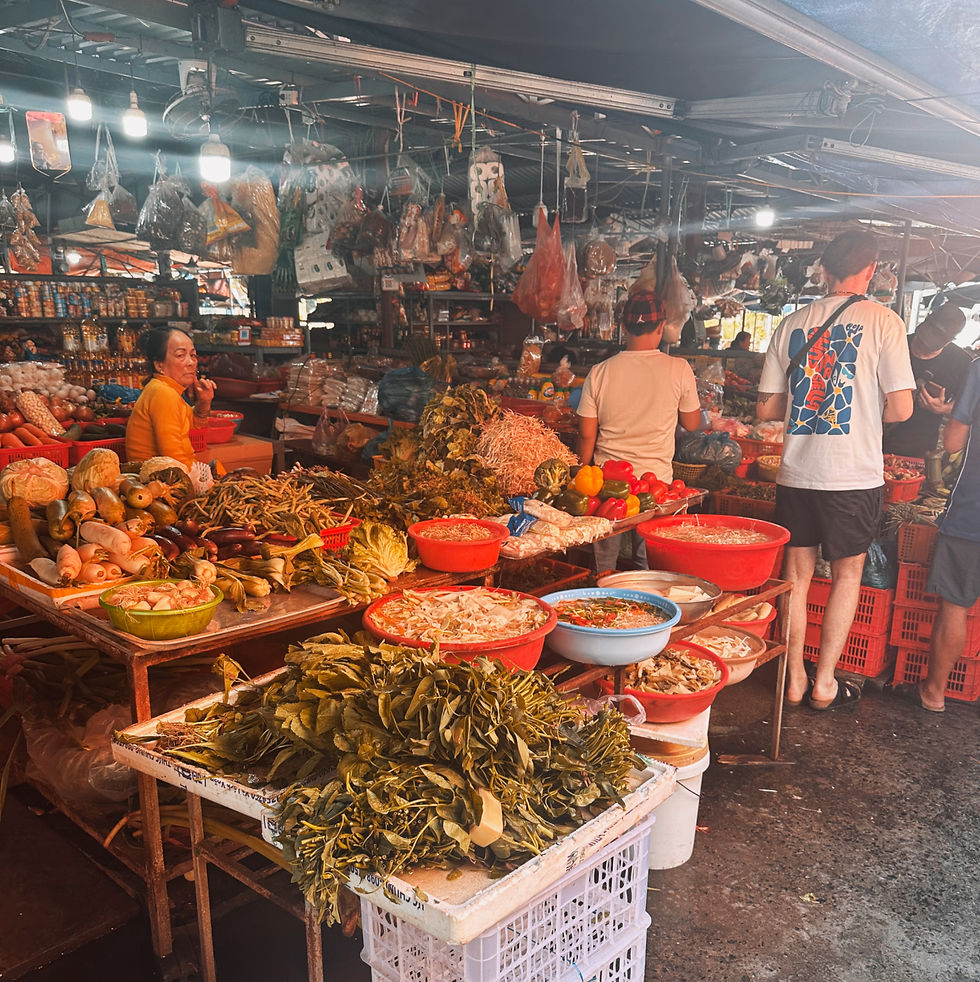
Every morning, once the central markets open for business, hungry crowds descend on the stalls of fresh veggies, noodles, and souvenirs. This energy ramps up into the afternoon and evening as the city's world-famous tailors fling open their doors and restaurants start serving delicious noodles, rice, and congee.
Comforting noodle soups, mouthwatering chicken rice plates, long black coffees, and lots of Huda beer fuel our exploration for the next few days...
Just about every establishment serves frosty Vietnamese coffee with sweet condensed milk, a deeply caffeinated and refreshing treat that bolstered our spirits in the tropical heat. Despite my manic protests, my girlfriend Charity wisely limited me to half a cup of elixir a day after noticing tremors in my hands.
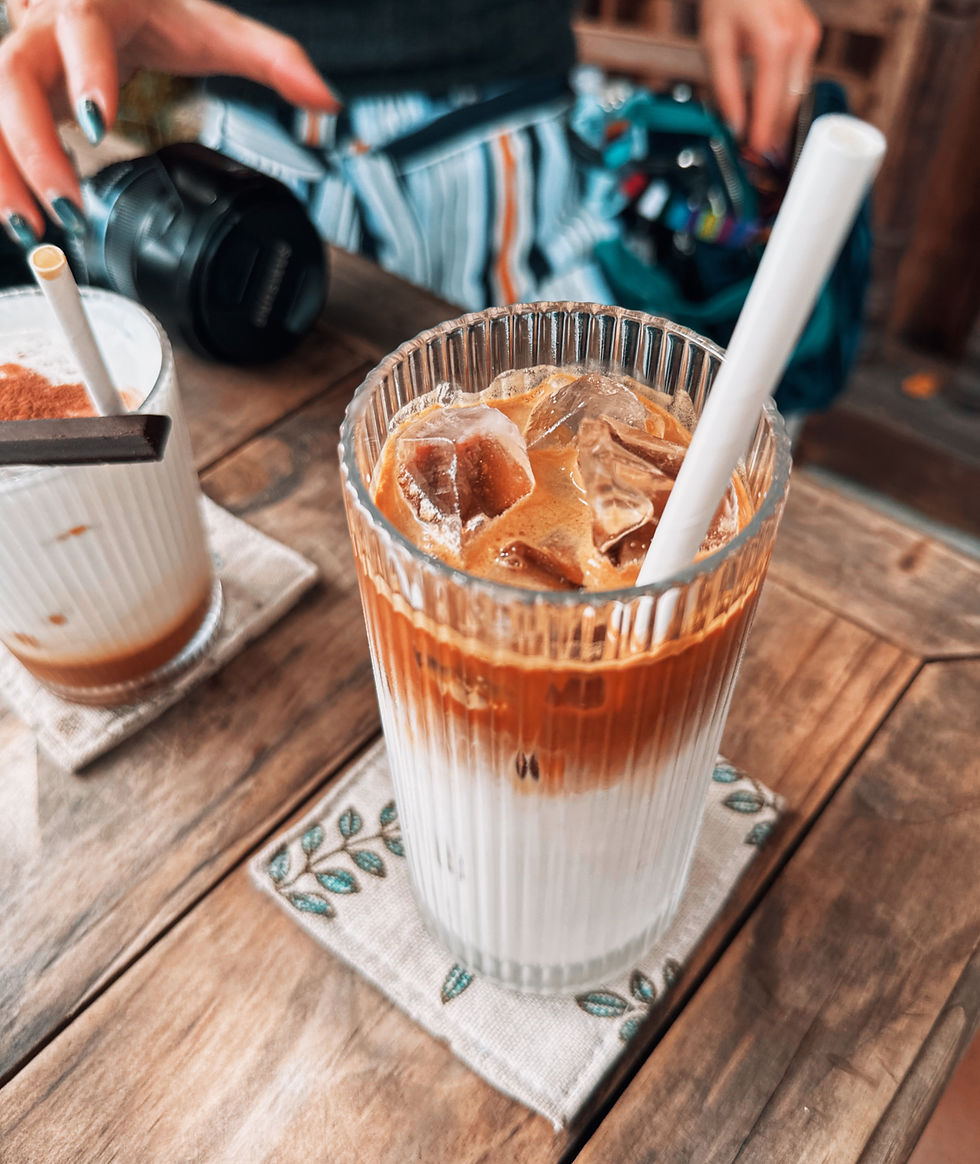
At the Hội An institution, Mì Quảng Ông Hai, we got busy with the eponymous bowl of turmeric rice noodles in a meaty broth topped with shrimp, sliced pork, quail egg, and a crunchy sesame cracker.
Hidden in one of the many quiet and dreamy alleyways is the attractive Búp Cafe where we dived (dove? pigeon?) into cao lầu, another noodle soup bowl featuring distinctive chewy noodles, marinated pork, and fresh herbs. While smitten with nearly every meal we had in our three days in Hội An, the standout was a humble dish of crushed rice crackers with a chewy rice sheet filling known as bánh đập.
MUST-EAT VIETNAMESE DISH #1: Bánh Đập
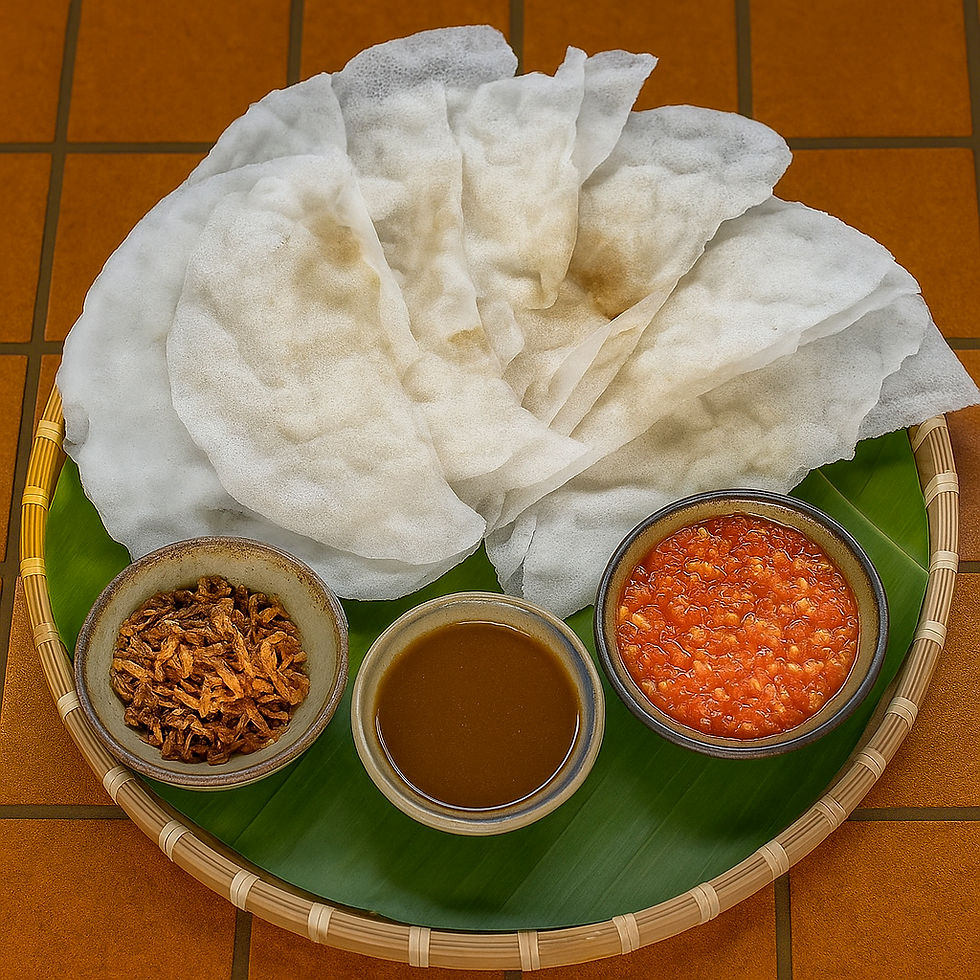
A couple hours into our Vespa tour – a fully immersive experience we can’t recommend highly enough – our guide, Kien, took us to a small shack where a local legend, Auntie Nguyen, produces nothing but steamed rice sheets all day long. When you're determined to eat the best food in Vietnam, this is a great way to start off. Her workstation consists of a wide stone fireplace housing two large metal pots. The pots are filled with water and capped with a thin layer of tightly-stretched fabric for steaming.
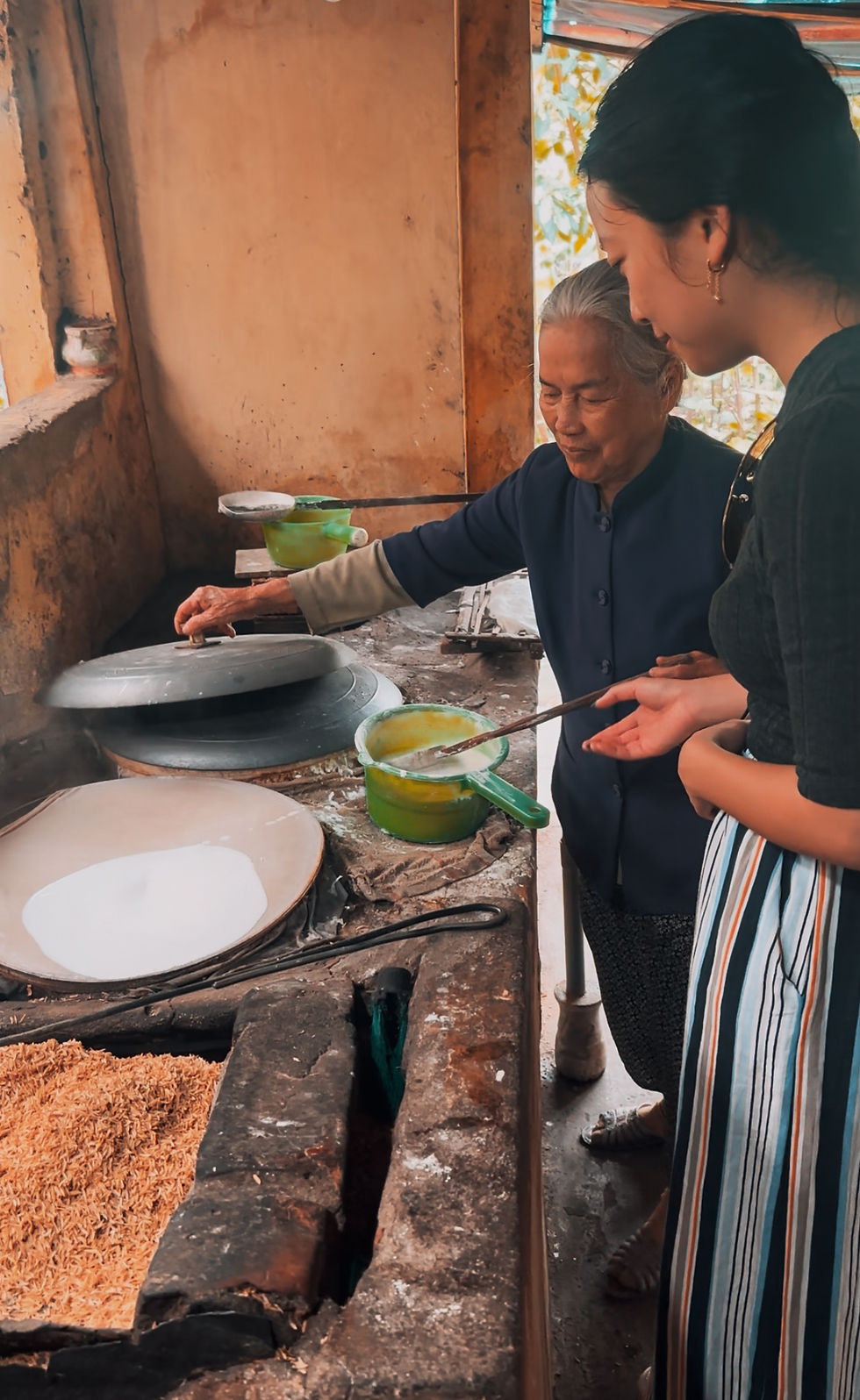
Auntie Nguyen ladles a batter made of rice flour and water over the fabric and swirls it around to form thin pancakes. After cooking beneath a metal lid for only 40 seconds, the nearly-transparent rice sheets are done and she delicately transfers them to a clothesline to cool.
She scrapes piles of leftover rice husks from the flour-milling process into the stove – nothing goes to waste here – stokes the embers, and urges us to start on the next round. After a couple tries we end up with slightly thicker and more oblong sheets that she assures us are passable.
Gathering up the sheets, she brings us over to the wooden desk where she rolls the sheets through a crank-operated slicer into wide, flat noodles. As she works, she tells us that up until she acquired the machine 3 years ago, she’d been slicing individual noodles by hand. But the noodles are not what she feeds us. After sandwiching one of the unsliced rice sheets between two more that have been baked into crackers over the coals, she tells us to sit at the dining table.
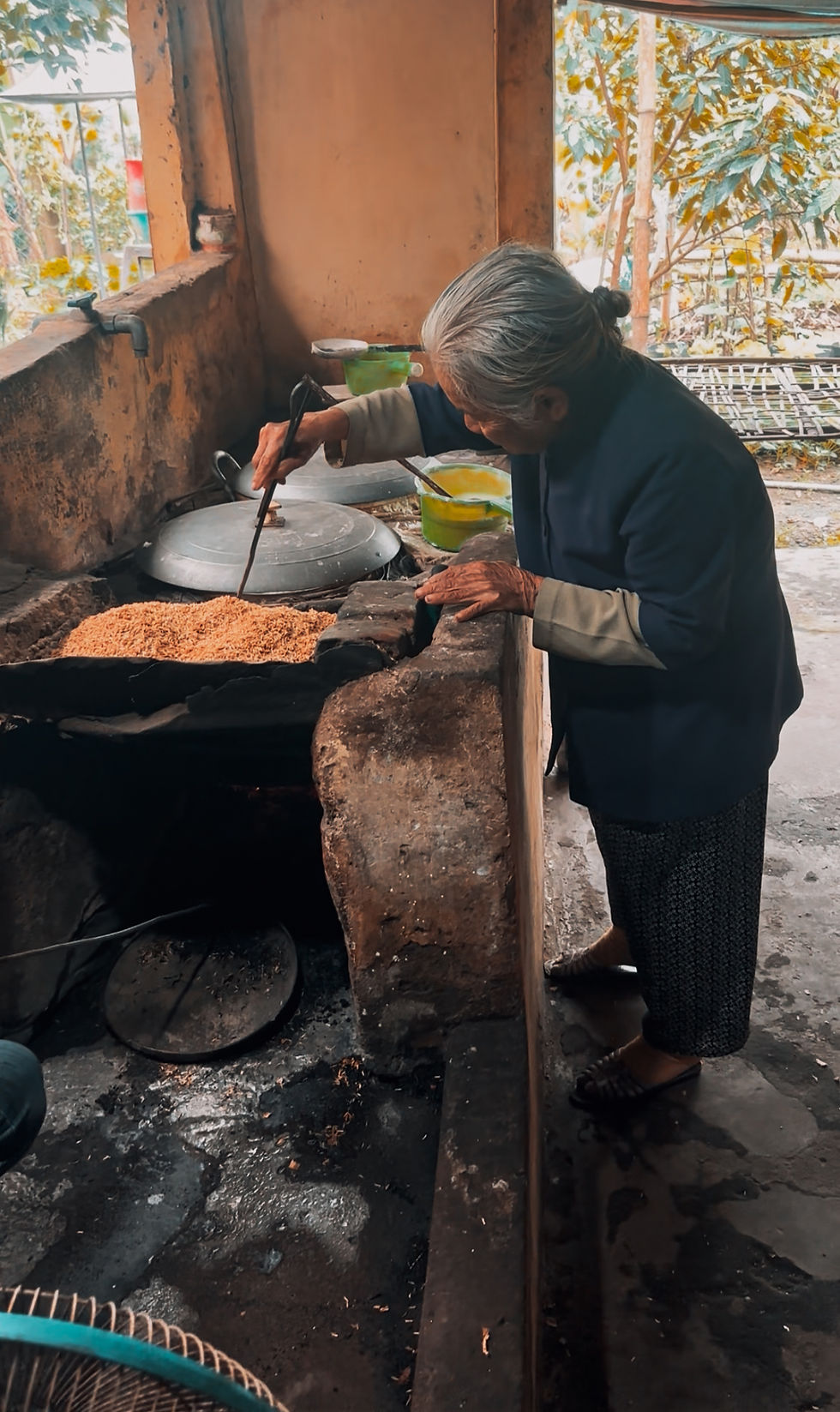
We trip over ourselves to obey and she prepares a bowl of nước mắm, a tangy, umami dipping sauce composed of fish sauce, sugar, and lime juice that you’ll find on the edge of the table alongside fresh herbs and chopped chilis at practically every restaurant in the country. Finally, she cracks the bánh đập with the back of her knife (hence its name, translating to “crushed rice cake”), slices it into bite-sized pieces, and serves it in a bowl next to the nước mắm.
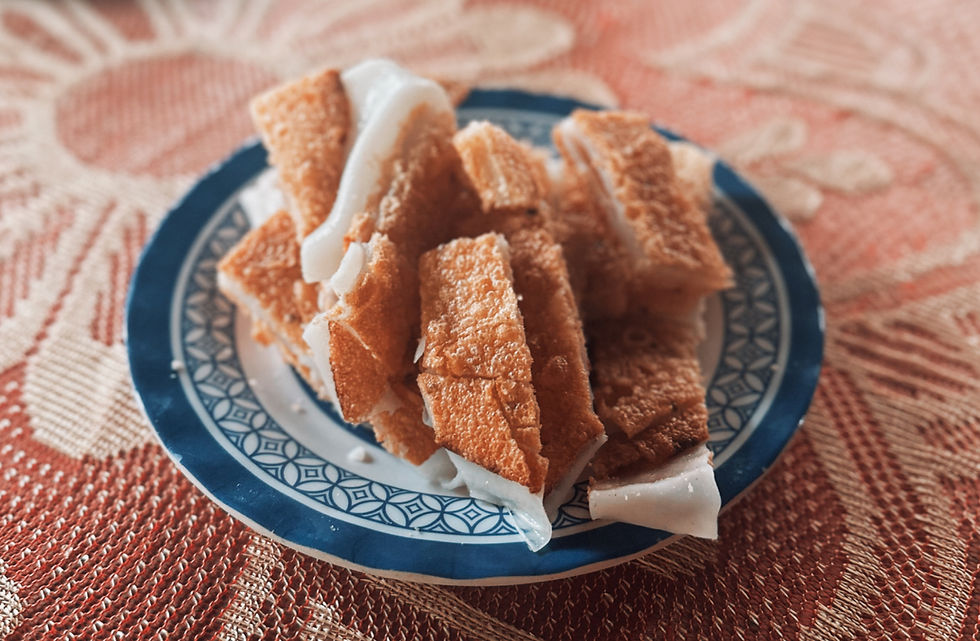
We enjoy the first couple of bites without the dipping sauce. Warm, earthy, and so satisfying. The crunch and browned flavor of the toasted rice crackers mixes beautifully with the fresh, chewy interior and subtle smokiness from the burning husks permeates every layer. The sharp nước mắm wakes you up with bright salty-sweet zing, igniting the stable rice flavors and prompting the occasional eye twitch.
We inhale the bowl with our guide in a minute or so and praise Auntie Nguyen as she surveys us with an easy smile. She offers us a second and, after it disappears just as quickly, a third – but Kien stands up and tells us it’s time to go to the next stop. It’s hard not to feel a little resentful.
Just rice and water make up this brilliant Hội An specialty. It was one of the simplest dishes we had on our trip – and one of the best.
What to Eat in Huế

Leaving the flavors and friends of Hội An behind was difficult, but the breathtaking vistas of the mountainous coastal countryside from our train ride up to the city of Huế had us looking forward to more adventures, and of course, morrrre food. Once the imperial capital of Vietnam under the Nguyen Dynasty, Huế is home to magnificent architectural remnants of the empire and some of the most delicious food in the world. The city is split by the winding Hương River, with the main cultural landmarks in the northern section... with the restaurants, bars, and shops in the more-developed southern half. Sprawling estates and royal mausoleums pepper the hills surrounding the city and the vast Historic Citadel looms grandiose in the heart of the northern district. With so much to explore, we need something hearty, but not heavy to power through. Enter bún bò Huế.
MUST-EAT VIETNAMESE DISH #2: Bún Bò Huế
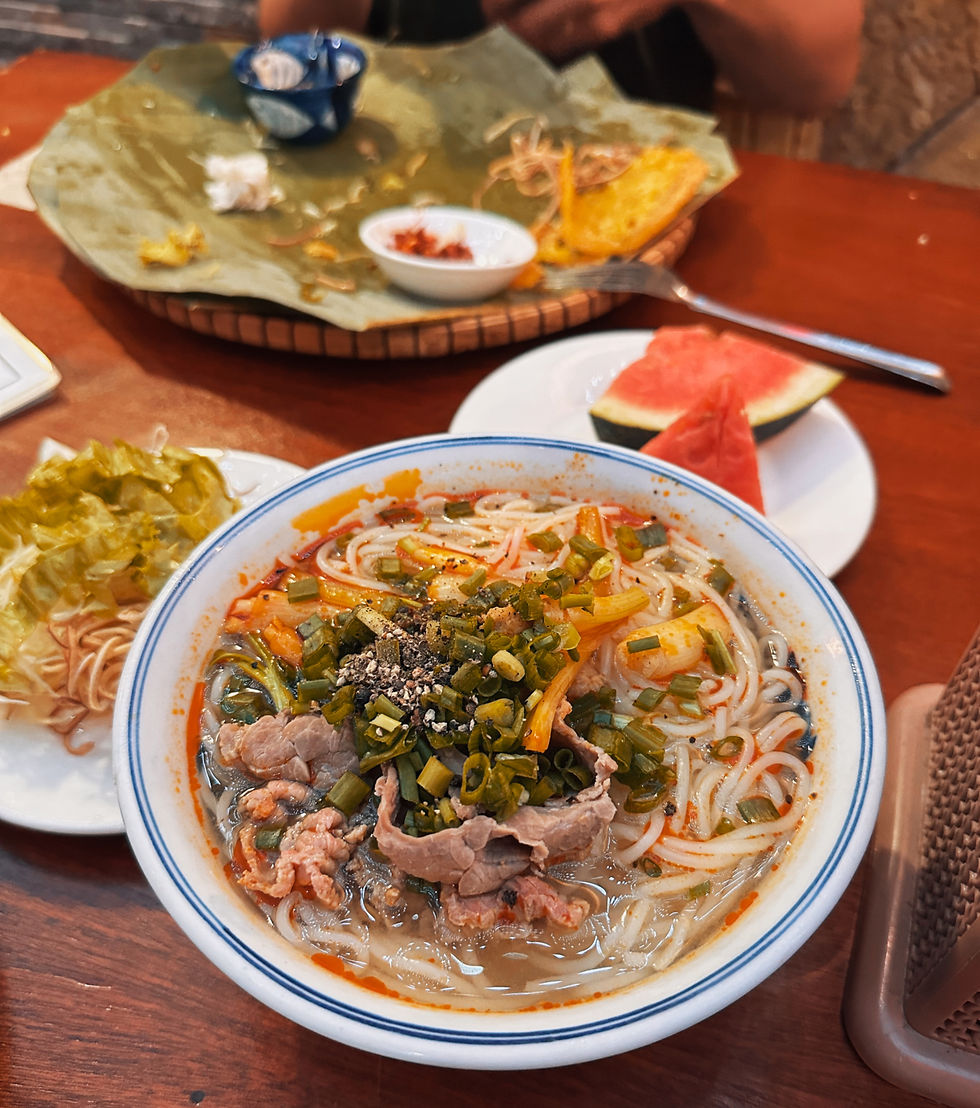
Every 20 feet you’ll find a stall or restaurant serving huge, tantalizing bowls of this amazingly complex soup. Bún bò simply translates to “beef noodle soup,” but the rich and spicy broth is actually made from both beef and pork bones, giving it a creaminess that resembles a lighter tonkotsu. Aromatics like garlic, onions, ginger, lemongrass, and umami shrimp paste bring the soup to life while a spicy satee of fried annatto powder and chilis gives it its characteristic crimson color. The soup is ladled over a nest of thick rice noodles and topped with an array of meats like thin slices of the beef shank, oxtail, and pork hocks that were used as the base of the stock, as well as steamed che Huế (local peppery pork sausage). Often you’ll find a cube of congealed pork blood as well which is certainly not to be avoided. The notion may make you skittish, but texturally it’s really just like a red, nutrient-dense block of tofu that mainly serves as a sponge for the tasty broth.
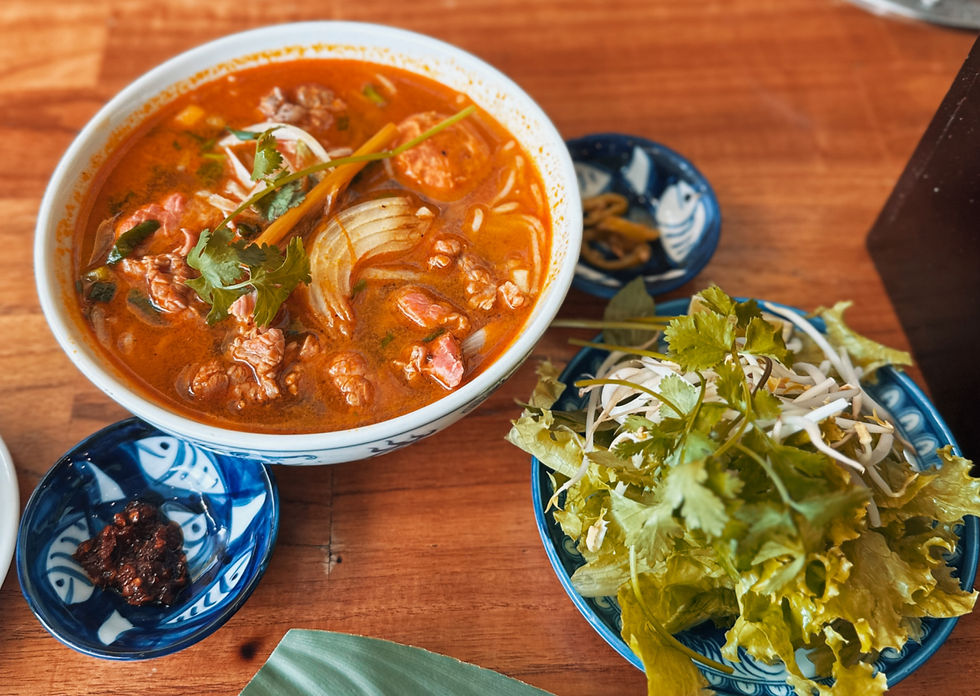
It would, however, be understandable if you chose to forgo the purple jar of fermented shrimp paste called mắm tôm as it has a rather formidable stank. It’s the same paste that was used to flavor the broth, and many enjoy stirring an extra spoon of the “fresh” stuff into their bowls. It’s a delicious umami bomb, but will certainly put some hair on your chest. Finally, as with most Viet dishes, bún bò Huế is accompanied by a crisp plate of fresh herbs like mint, coriander, banana blossom, and bean sprouts, to complement the strong flavors of the soup.
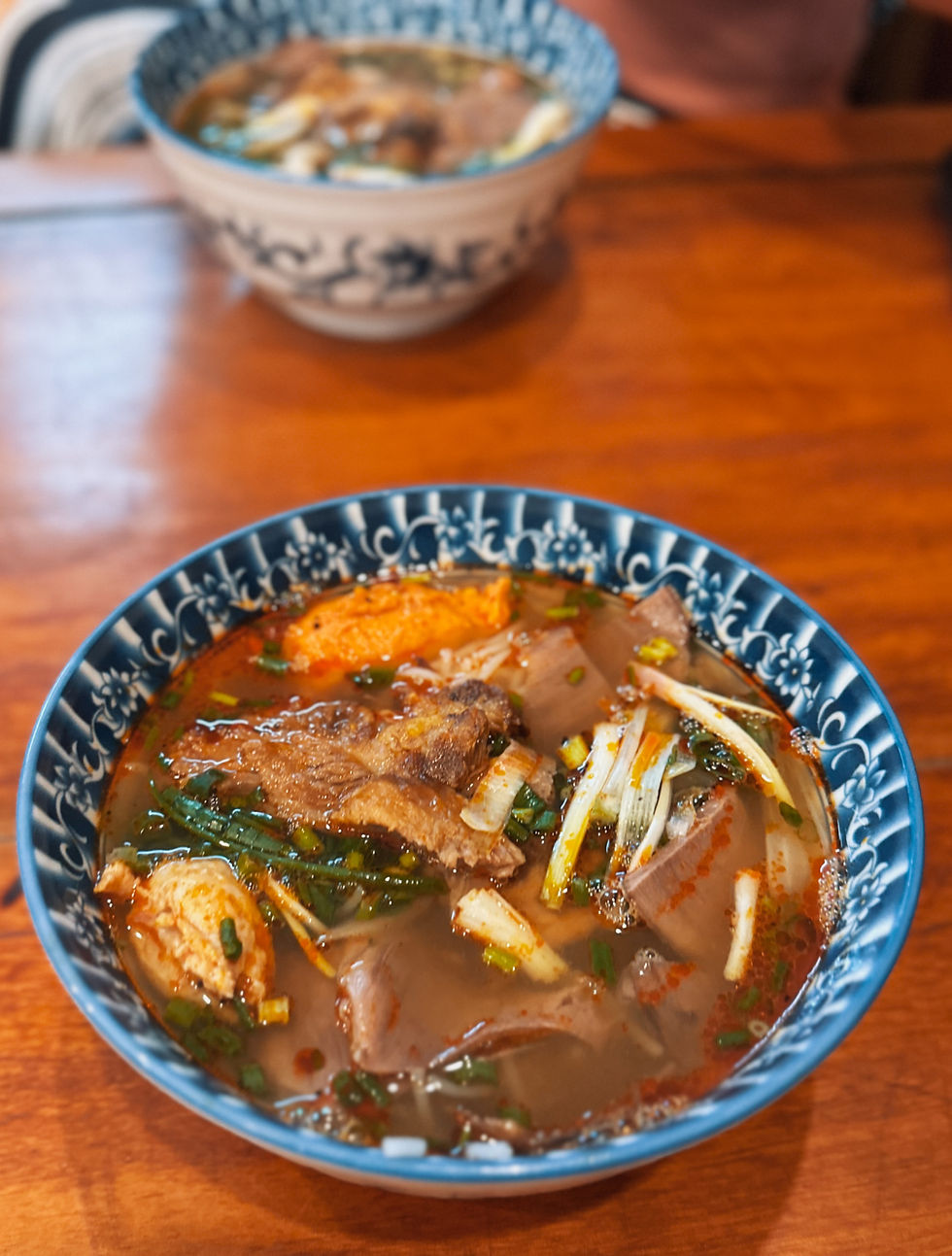
There’s a lot going on, but it never feels unbalanced or overwhelming. And the best part: it won't slow you down. We spent long days exploring tombs, riding Vespas through the city, and wandering the walled citadel and the magnificent Purple Forbidden City within, and we began almost all of them with a spicy bowl of bún bò Huế.
We weren’t alone, either. Locals slurp up bowls of bún bò Huế at 7am (and every other hour of the day) – it’s the lifeblood of Huế. I don’t know about you, but after a bowl of ramen it’s T-minus ~2 hours until naptime for me.
MUST-EAT VIETNAMESE DISH #3: Bánh Bèo
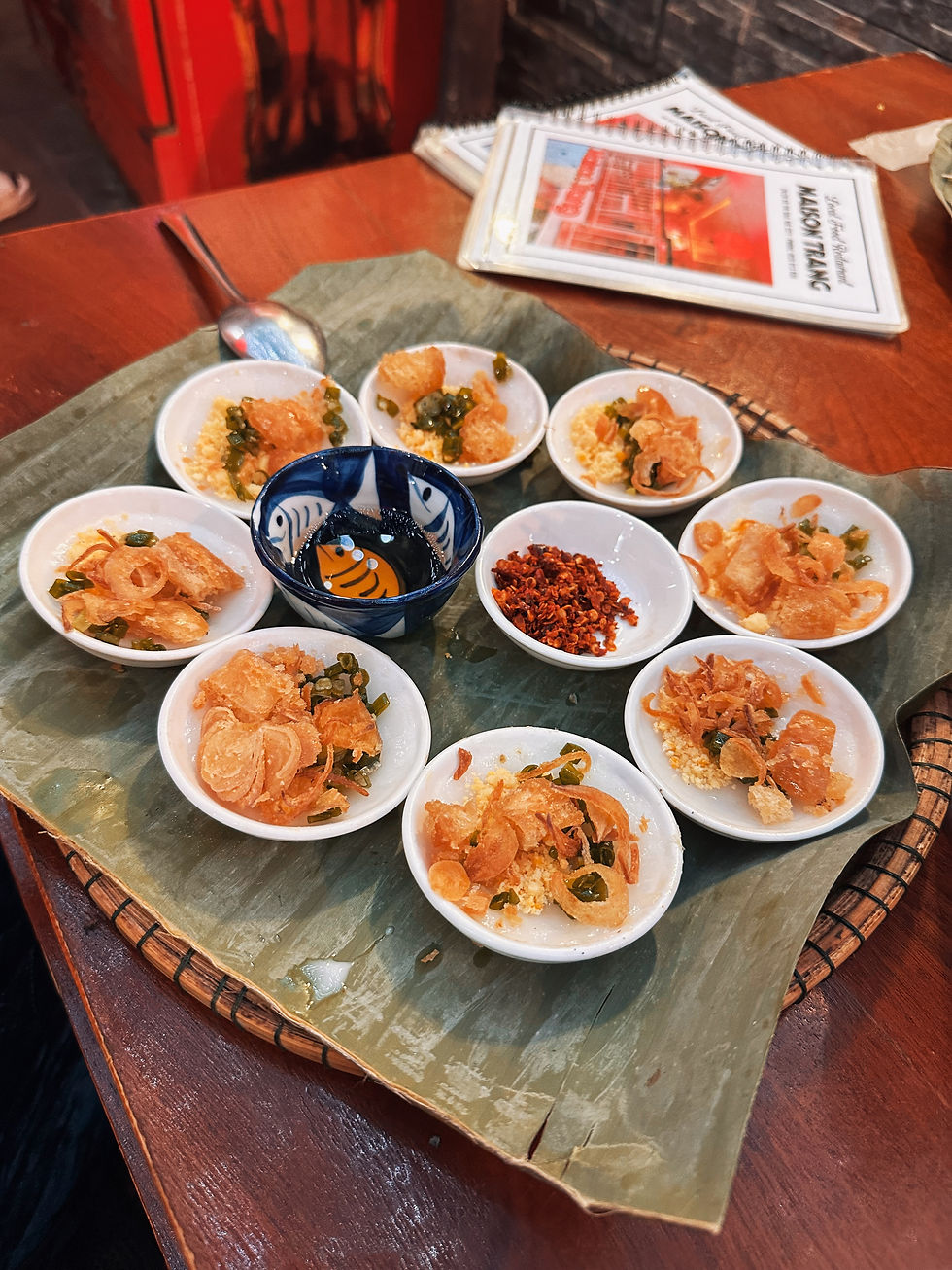
For visitors to Huế, the other edible necessities are the various forms of bánh. Literally meaning “bread” or “cake”, bánh is a blanket term for all kinds of starchy treats like crepes, noodles, sandwiches, buns, and dumplings. The primary bánh of Huế resemble dim sum and work as pick-me-ups, appetizers, side dishes, or whole meals unto themselves. There are dozens of delectable bánh throughout the country that vary widely in preparation and flavor depending on where you go, but we experienced our deepest bánh bliss at the hands of the bánh bèo at the hidden Maison Trang restaurant in Huế.
You may think you’re lost after meandering down the three quiet alleyways that separate this famous eatery from the main road. Faint sounds of family karaoke drift in from the residences lining the winding corridor and several of the ubiquitous small street dogs of Vietnam – all of whom “belong to someone” according to our Hội An guide, Kien – escort you along your way. Follow them all the way down and you’ll wind up at the brightly-lit Maison Trang.
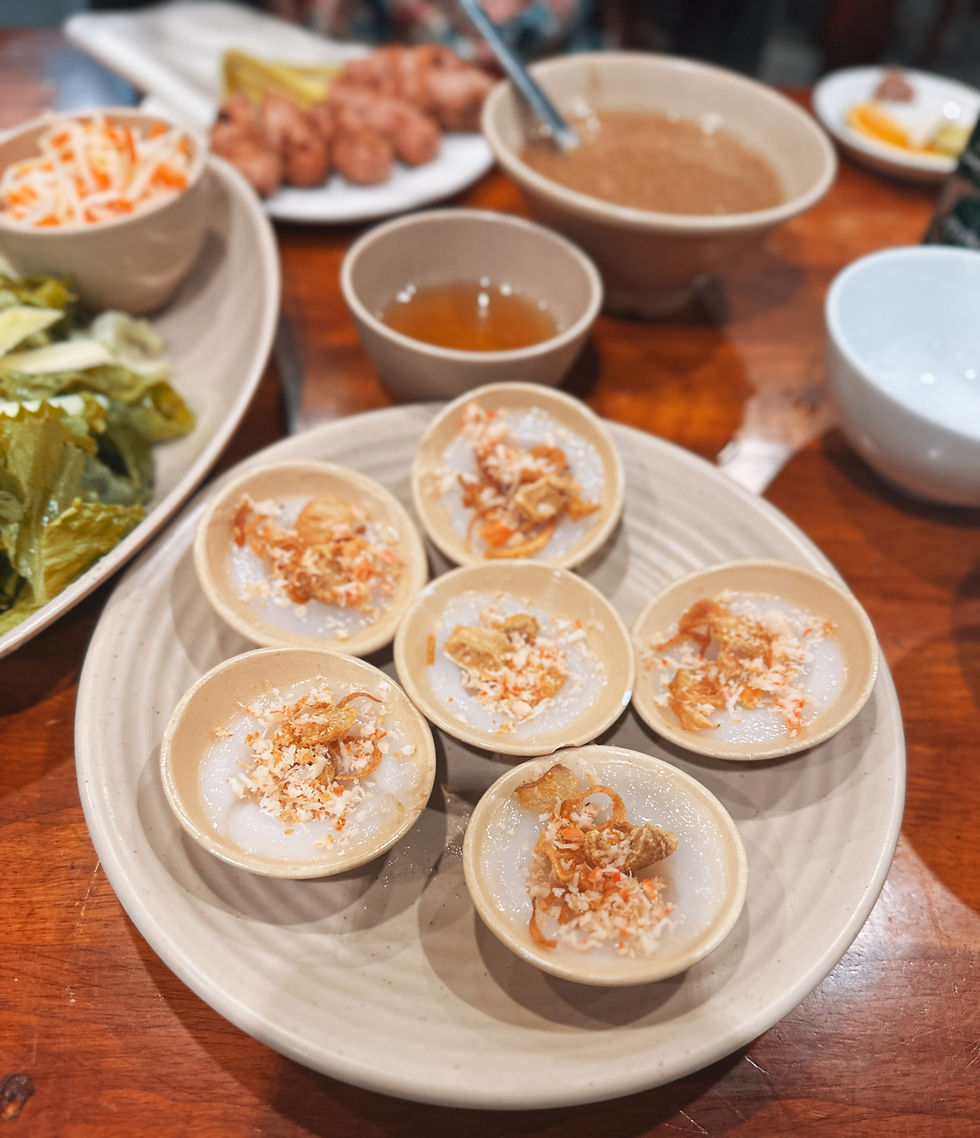
Appearing to be a repurposed apartment building, this secret oasis is nestled just below a popular hostel, so you’ll find the odd traveler basking in the beef noodles, grilled lemongrass pork, and of course the delicious bánh that they serve here. Though we enjoyed the bánh bèo we ordered at almost every opportunity during our time in Huế, we still dream about the ones at Maison Trang.
Batter made from rice and tapioca flour is poured into small bowls and steamed to form simple cakes which are then topped with rich pork crackling, fragrant scallion oil, creamy mashed mung beans, and the star of the show, prawn floss. Frying up dried prawns that have been rehydrated and blitzed in a food processor yields these addictive yellow crumbles of flavor that will set your mouth a-waterin'. With a small drizzle of salty-sweet nước mắm, these soft savory cakes are ready to devour. You know it’s good when, save for the occasional groan, the table is silent until the meal is finished. One large bite is all you need to finish off each of these bowls, so it’s a good thing there are 8 of them.
You’ll find this addictive combination of shrimp and pork belly featured in the fillings of many bánh. One of our other favorites, bánh bột lọc, resembles an aspic, with the two meats suspended within transparent, chewy tapioca dumplings. Another, bánh xèo, has them stuffed along with mung beans, bean sprouts, and herbs into a crispy, yellow rice pancake. Both are incredible. Both can be had with a couple bowls of bún bò Huế and a few Huda beers – all for less than $10USD. Vietnam is the best.
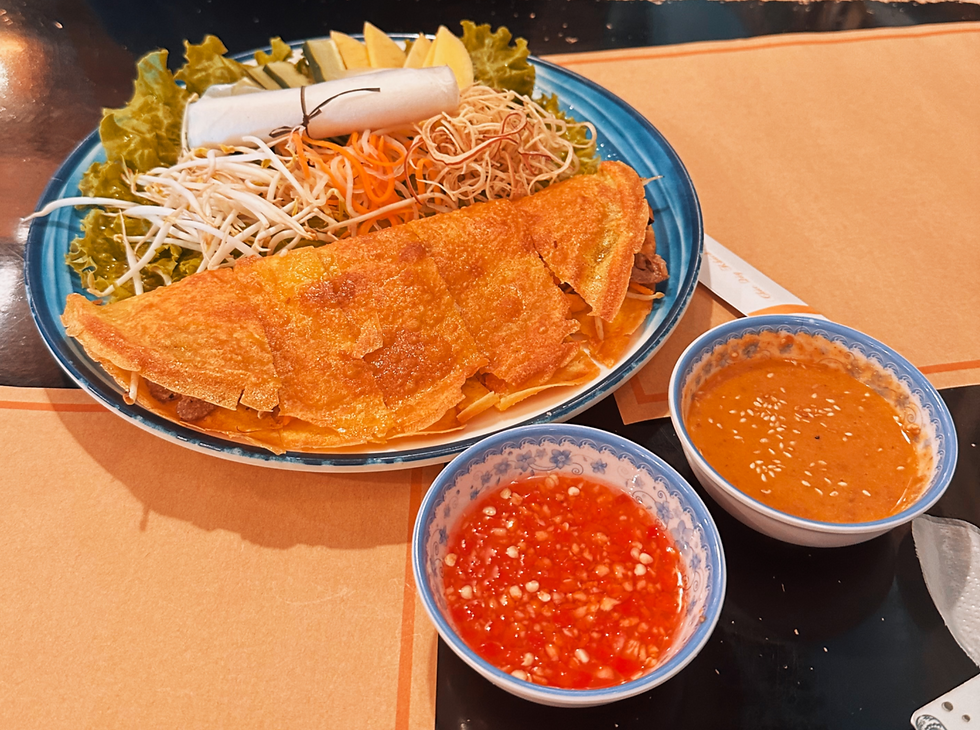
What to Eat in Hanoi
By the time we were heading to the Huế Airport to catch our short flight up to the last stop of our journey, Hanoi, it was clear that this trip was going to be far too short – ain’t that just the way? We had only four days left and two of them would be dominated by day trips to the limestone mountains of Ninh Binh to the south and the rocky isles of Hạ Long Bay to the east. We’d have so little time in this enormous city and it felt like we’d need months to explore and enjoy it properly. In order to pack as much food and adventure as we could into our brief visit, we decided to sacrifice some sleep – nothing that can’t be overcome with the twitchy power of Viet Coffee – and set off right at 6am to seek out some legendary phở.
MUST-EAT VIETNAMESE DISH #3: Phở (Duh)

In the northeast corner of Hanoi is the Old Quarter, an unbelievably stimulating neighborhood where the beautiful plant-covered buildings, the unrelenting traffic, and the mouthwatering aromas from the sizzling street stalls demand your full attention. I can’t get enough of this energy, but if you do need a break from the heat and the high-octane stimuli of the streets, you can duck into any of the thousands of noodle shops, sit on a tiny plastic stool, and have some of the best food of your life. Following a recommendation from a friend, we visited one such shop, Phở Bò 8 Hàng Da, and boy did it not disappoint.
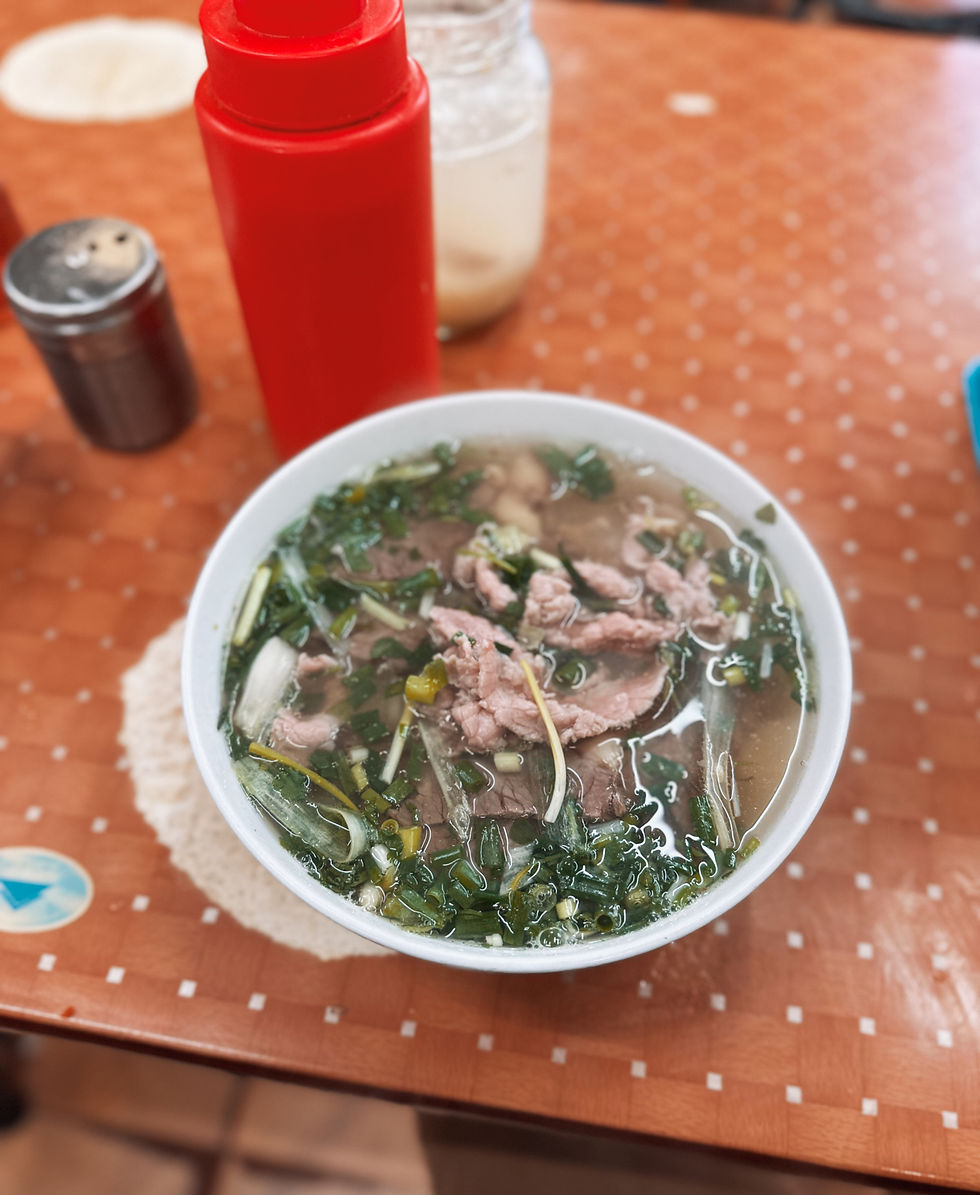
It’s about a 15 minute walk from our Airbnb through the Old Quarter to Phở Bò 8 and, at 6am, the cool, quiet atmosphere belies the coming chaos of the day. Despite opening only minutes before we arrived, the sidewalk out front is already lined with Vespas and the two dining tables are nearly filled. With no front facade, the place is totally open to the street, providing both easy access and necessary breeze. We grab a pair of open seats and prepare to share a delicious breakfast with our neighbors. The cafeteria-style seating, along with the exclusively Vietnamese menu and the exclusively Vietnamese-speaking staff gives us the sense we’re in a proper local joint. We try asking about a specific menu item and our waitress simply walks away. Message received. They’re not interested in appealing to tourists here and they shouldn’t be. They only serve phở with some slight variations in toppings and broths and we can figure it out for ourselves. When she swings by a few minutes later, we tell her what we want and she calls it in with a smile.
From our spots we have a great view of the kitchen, by which I mean a metal street cart loaded with bowls of fresh veggies, piles of different cuts of sliced beef, stockpots of hot broth, and hand cut noodles around which three women sit on stools. They’ve already been here for hours prepping ingredients and all that’s left to do is assemble delicious bowls of phở. Minutes later we have our orders – massive steaming bowls of aromatic broth with generous portions of thinly sliced beef, light rice noodles, and vibrant greens.
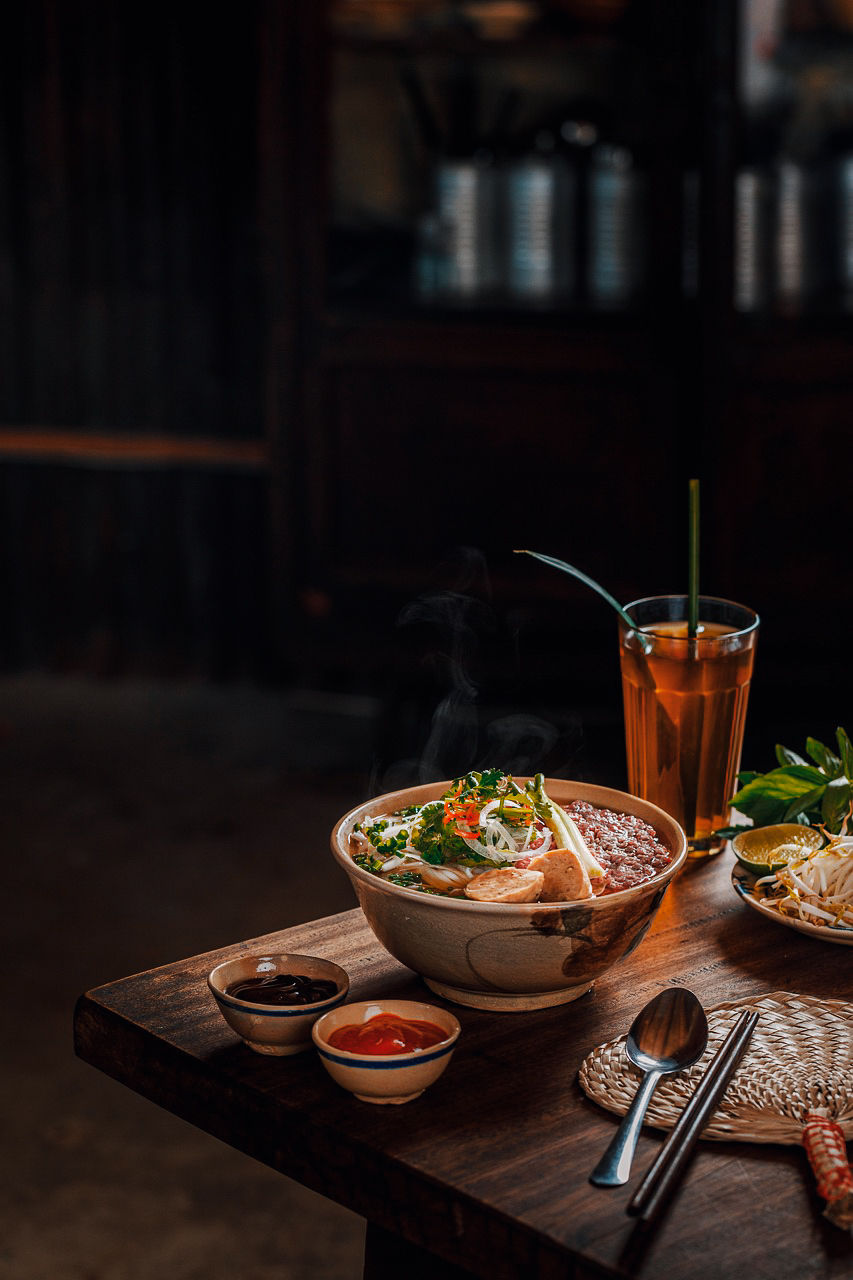
On the table are bowls of lime wedges, sliced chilis, and fish sauce, but as always, we want our first tastes to be unclouded. And oh man, this beef bone broth is like a warm hug. It’s umami, gingery, and restorative, like there’s no illness that a bowl couldn’t cure. I’ve never had noodles this silky either. So fresh with the perfect soft, yet springy texture. The beef is slightly chewy, but delicate and tender, complementing the noodles and wilted greens beautifully.
After savoring the pure initial bites, we go in for some add-ons. The gentle acid from the limes lifts and brightens the broth and slight heat from the chilis hyper-engages all our taste buds, making the warm hugginess (real word) of the bowl even tighter and cozier. All too soon, we emerge from our reverie, deeply satisfied and shockingly energized despite the amount of food we just inhaled, pay the seemingly criminal price of 50.000 VND, that’s about $2 USD), and venture off to explore Hanoi.
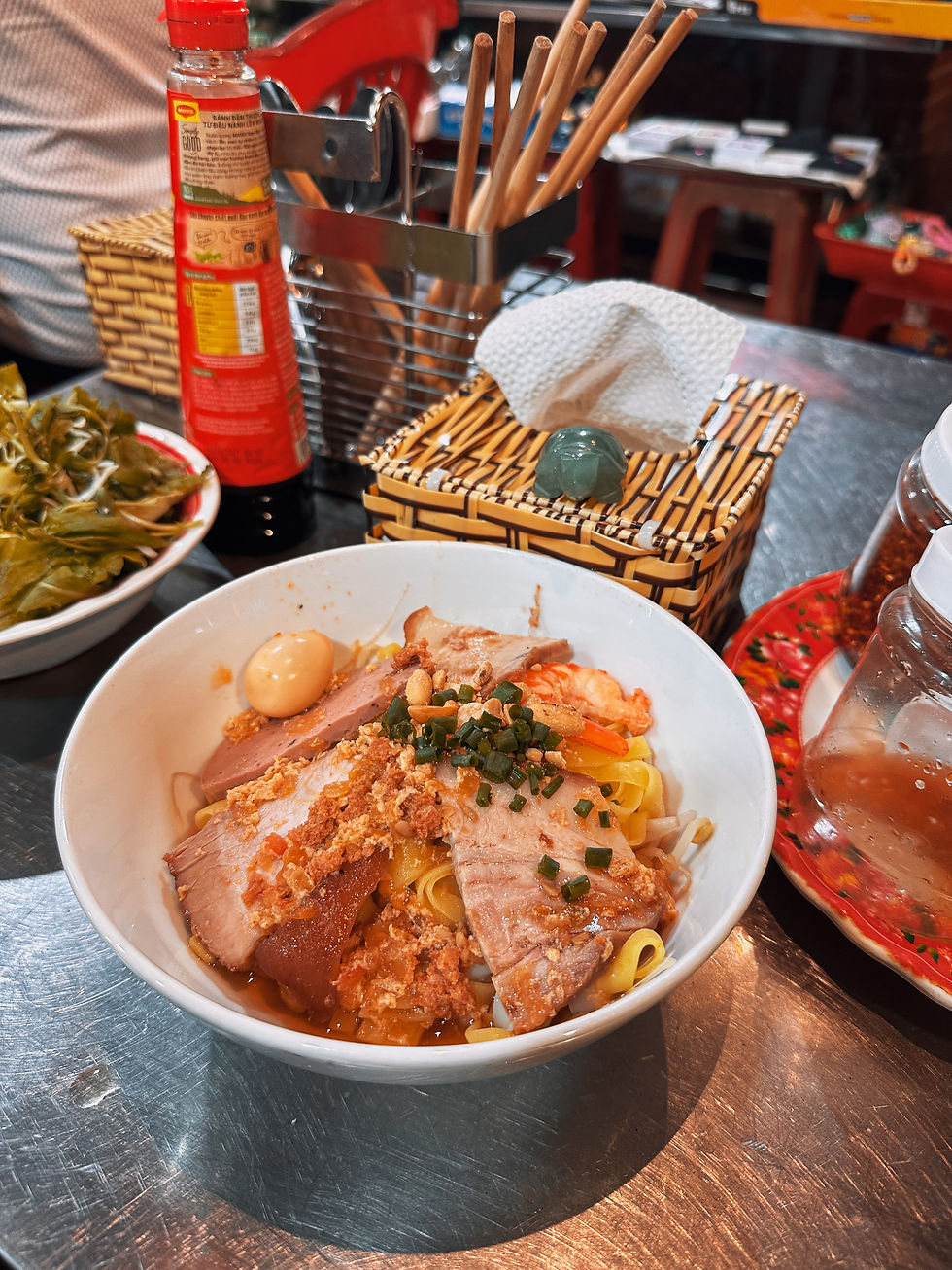
We had such ambitious plans to try as many different foods as we could during the rest of our brief time in the city and I think we made a noble attempt, but Phở Bò 8 had its hooks in us and we went back twice more.
Everything we did manage to try though, we fell in love with, including a few more Hanoi staples like chả cá Lã Vọng (fried catfish with turmeric and dill over rice), bún nem nướng (grilled pork meatballs over rice noodles), and of course bánh mì.
I know we barely scratched the surface of all there is to do and to eat in Vietnam during our trip, much less in this little article, but I hope it inspires you to seek out some of these tasty spots and to discover many more of your own in this wonderful country. It’s a good sign when near the end of your trip you’re already planning your return.
Anthony Bourdain described Vietnam as a place that "grabs you and doesn't let you go. Once you love it, you love it forever."
We couldn’t agree more and we will be coming back. Soon.

Solutions for Tiny Trekker Meals? Click below to check out some curated picks for making life easier when traveling with (and without) small children.
Visit GEAR UP For More Outstanding Travel Essentials
Copyright © WS&T. All rights reserved.


















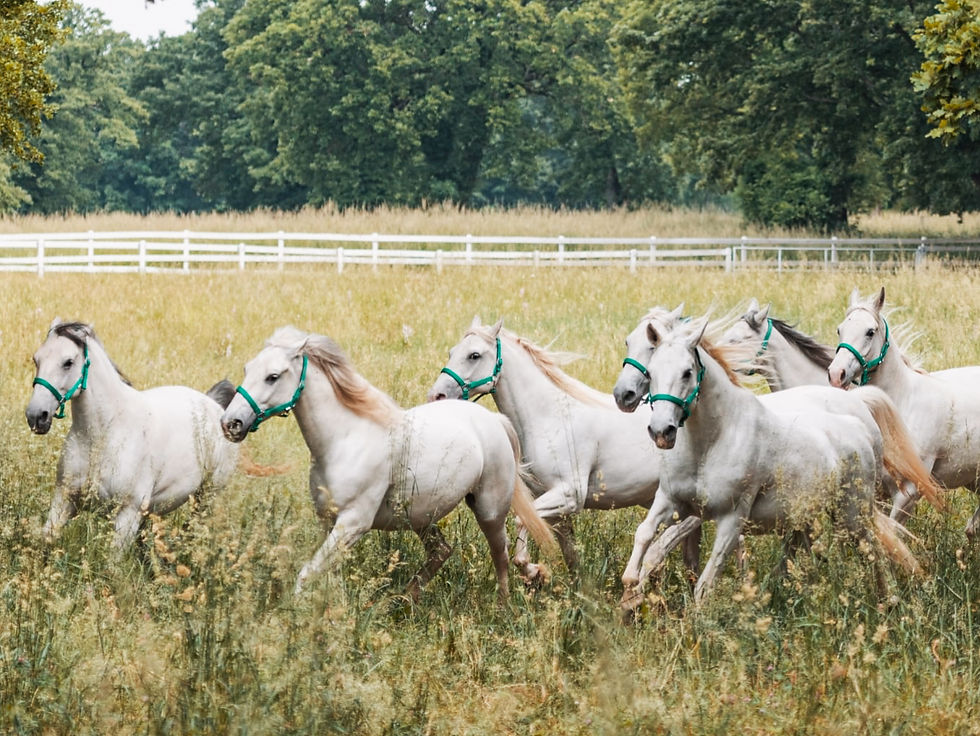

Comments